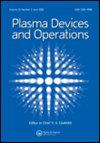Low-energy particle interaction with plasma-irradiated metal surfaces
引用次数: 5
Abstract
In fusion experiments, plasma erodes walls of devices containing various elements including carbon. The eroded carbon penetrates into edge plasma and is transported backwards forming the carbon-adsorbed layers on the surfaces of components like mirrors for optical plasma diagnostics. To characterize the carbon-adsorbed layers by measuring energy distribution of particles reflected from the surface, we have used the experimental setup equipped with a magnetic deflection momentum analyzer and the time-of-flight energy analyzer of neutrals. Ion beams in the energy range 1–2 keV irradiated the samples of Mo and W with carbon deposition on them that were prepared in separate plasma chambers. The beams produced ions and neutrals with characteristic emission angle and energy distribution depending upon conditions of the sample surfaces. Experimental results are compared with the numerical calculation model ACAT (Atomic Collisions in Amorphous Targets) and the evaluations on how the structure of deposition layers may affect the particle reflection on solid surfaces were made.低能粒子与等离子体辐照金属表面的相互作用
在核聚变实验中,等离子体侵蚀含有碳等多种元素的器件壁。被侵蚀的碳渗透到边缘等离子体中,并向后运输,形成光学等离子体诊断用反射镜等组件表面的碳吸附层。为了通过测量从表面反射的粒子的能量分布来表征碳吸附层,我们使用了配备磁偏转动量分析仪和中性物飞行时间能量分析仪的实验装置。能量范围为1 ~ 2kev的离子束辐照分别在等离子体室中制备的Mo和W表面有碳沉积的样品。光束产生的离子和中性离子具有特征发射角和能量分布,这取决于样品表面的条件。将实验结果与数值计算模型ACAT (Atomic Collisions in Amorphous Targets)进行了比较,评价了沉积层的结构对颗粒在固体表面反射的影响。
本文章由计算机程序翻译,如有差异,请以英文原文为准。
求助全文
约1分钟内获得全文
求助全文

 求助内容:
求助内容: 应助结果提醒方式:
应助结果提醒方式:


